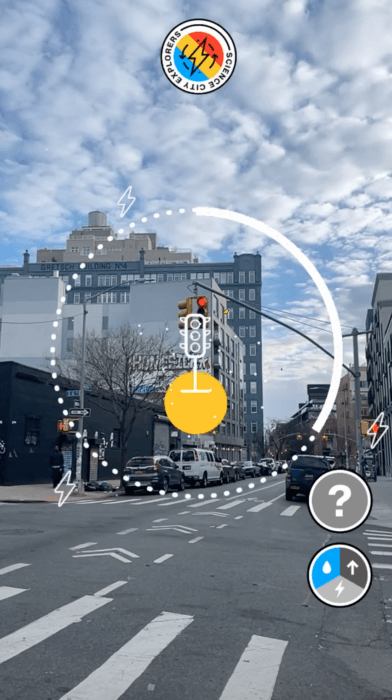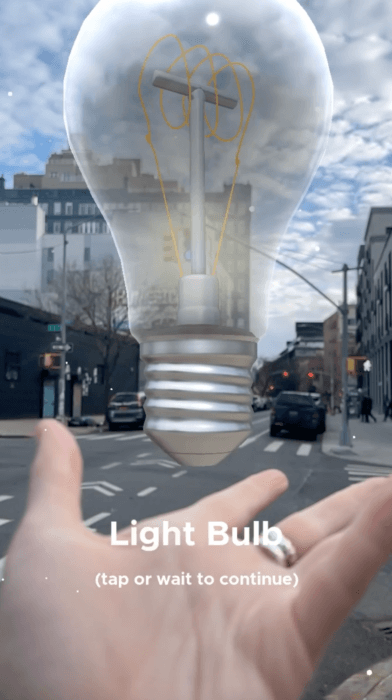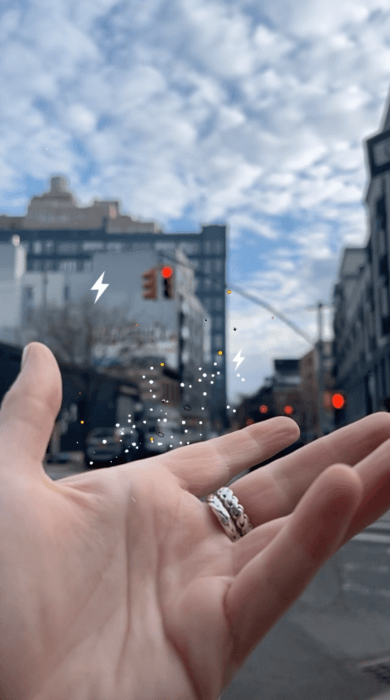May. 11, 2023 By Bill Parry
The New York Hall of Science (NYSCI) has launched a new program that will give infrastructure geeks a new and beneficial use for their mobile devices.
The institution in Flushing Meadows Corona Park is partnering with Verizon and Snap to roll out “Science City Explorers,” a citywide augmented reality experience that allows people to learn about science in common public objects across the five boroughs, turning New York City into a giant interactive learning lab.
The first-of-its-kind “Science City Explorers’ Snapchat Lens reveals the science and technology behind the city’s infrastructure, ranging from fire hydrants to stop signs. The program went live earlier this month and is immediately available in the Snapchat app in select New York metro areas.
“New York Hall of Science is committed to creating new ways of delivering equitable learning opportunities around STEM. The ‘Science City Explorers’ experience does exactly that — breaking down walls and unlocking science exploration across the city,” New York Hall of Science President and CEO Margaret Honey said. “Not only will it encourage children to get outside and explore their neighborhoods, but it will open their eyes to the city’s unseen world of science and engineering. Both Verizon and Snap are amazing partners and we are honored to work with their talented teams to turn the entire city into a learning laboratory.”
Developed by Social Tech Agency GoSpooky, the 5G “Science City Explorers” Lens is available exclusively for Verizon customers with a 5G smartphone on a 5G Unlimited plan on Verizon’s 5G Ultra Wideband network in the New York metro area. A 4G version of the lens is also available for anyone on Snapchat, independent of carrier and coverage area.

(Photo courtesy of NYSCI)
This new educational Snapchat Lens uses machine learning to recognize common objects from New York City’s infrastructure. By unlocking the Lens and pointing the Snapchat camera at selected water, electricity, and transportation infrastructure across the city, Science City Explorers reveal the behind-the-scenes technology powering NYC. For instance, Snapchatters can scan a stop sign and the Science City Explorers Lens will recognize the object using machine learning and reveal a hidden science component that powers it – in this case, the reflective sheeting that increases visibility and luminosity at night.

(Courtesy of NYSCI)

(Courtesy of NYSCI)
Explorers who use the Lens to learn about six or more city objects will receive a free ticket to NYSCI, New York City’s only hands-on science and technology museum, to continue the learning experience in person.
“The massive bandwidth, low latency, and fast speeds of Verizon’s 5G Ultra Wideband network take learning to a whole new level allowing users to collect and learn in super high fidelity on the go,” said Srini Kalapala, senior vice president of technology and product development at Verizon. “By combining the power of Verizon’s 5G Ultra Wideband network with Snap’s AR technology and NYSCI’s learning assets, you unlock unique, immersive experiences so children can interact and learn about science in new and engaging ways while they explore the city.”
Science City Explorers is built on and powered by Verizon’s 5G network, which gives Snapchatters the speed and capacity to explore more robust and complex AR experiences. To bring Science City Explorers to life, the Lens includes machine learning models that recognize a variety of everyday objects found throughout the city. Paired with the low latency and bandwidth of Verizon 5G, all objects can be collected in real time with minimal lag.
“It’s inspiring to see the creativity around learning that NYSCI and Verizon are bringing to the Snapchat community with this new Lens,” said Sofia Andrianakou, director of carrier partnerships at Snap. “At Snap, we believe in the potential that Augmented Reality has to enhance the real world around us, and this is a perfect example of how to do that via a unique Lens campaign. We can’t wait to see how NYC Snapchatters use the Lens to learn about their city.”
For more information, visit the New York Hall of Science website here.